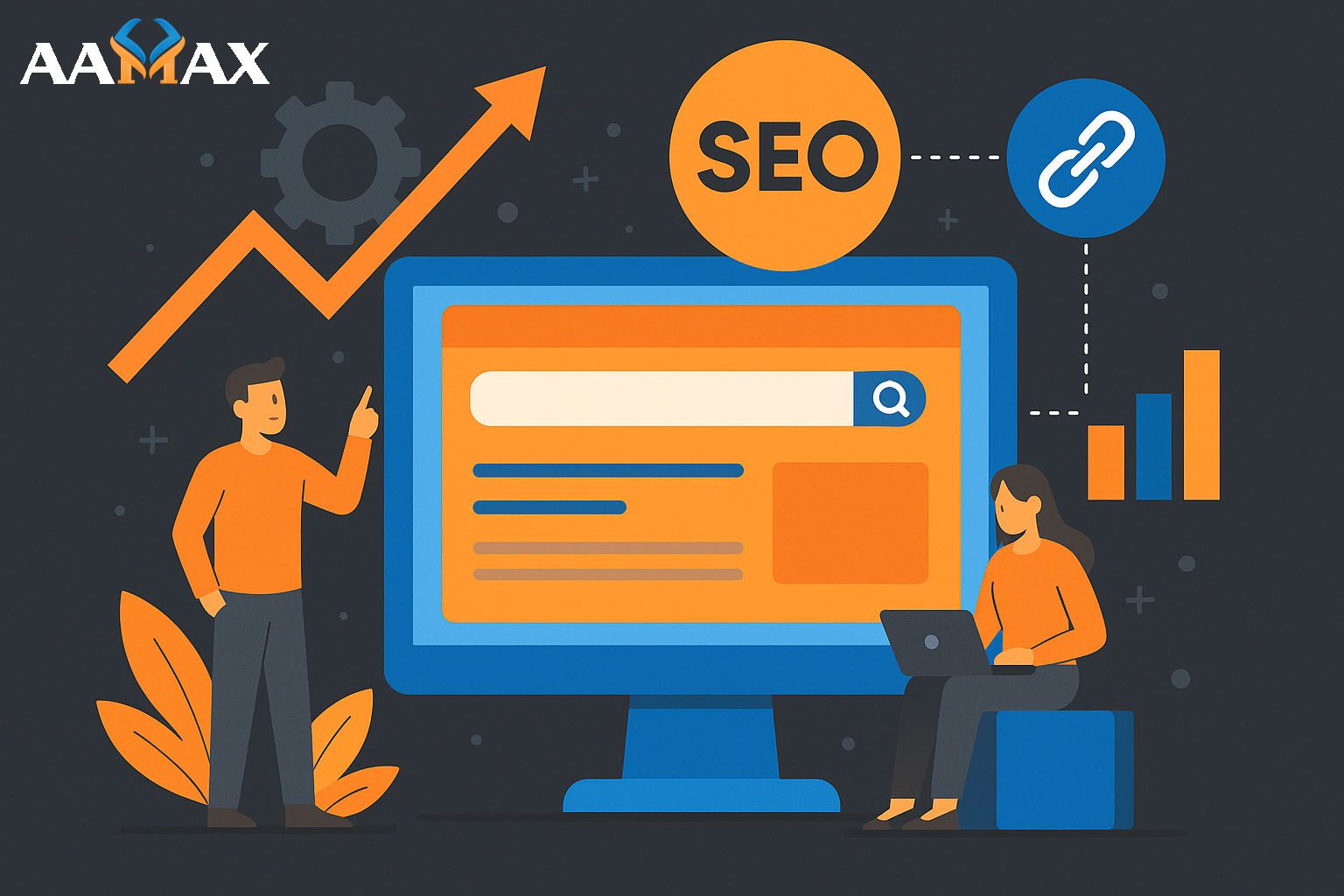
SEO and Website Design: How to Build a Site That Ranks
In today’s digital-first world, having a website isn’t enough. To stand out among millions of competitors, your site must not only be beautifully designed but also strategically optimized for search engines. SEO (Search Engine Optimization) and website design go hand-in-hand; a well-designed website can significantly enhance SEO efforts, and SEO can drive meaningful traffic to your stunning website.
This guide will break down exactly how SEO and website design intersect, the elements you need to prioritize, and how to build a site that ranks — effectively blending aesthetic appeal with technical excellence.
Why SEO and Website Design Must Work Together
Many businesses treat SEO and website design as separate entities. They hire a web designer to create a visually impressive site and later bring in an SEO expert to “optimize” it. Unfortunately, this approach often leads to lost time, higher costs, and missed opportunities.
When SEO and design are integrated from the start:
- User Experience Improves: A well-structured, easy-to-navigate site not only delights visitors but also helps search engines crawl and index pages.
- Reduced Bounce Rates: A fast-loading, responsive, and attractive website encourages users to stay longer.
- Higher Conversion Rates: Intuitive design paired with strategic SEO messaging leads to more conversions.
- Increased Visibility: Search engines reward websites that offer exceptional user experiences.
In short, building a site with SEO and design working together creates a strong foundation for online success.
Key Elements of SEO-Friendly Website Design
To build a site that ranks well, you need to address specific design and technical elements with SEO in mind.
Mobile Responsiveness
Mobile-first indexing is now the standard. Google predominantly uses the mobile version of the content for indexing and ranking. A mobile-responsive design ensures that your site adapts seamlessly across all devices.
Tips:
- Use a flexible grid-based layout.
- Prioritize mobile page speed.
- Simplify navigation for smaller screens.
Website Speed Optimization
Page load speed is a critical ranking factor. Slow websites frustrate users and increase bounce rates, negatively impacting your SEO.
Techniques to Improve Speed:
- Compress images without losing quality.
- Use browser caching.
- Minimize JavaScript and CSS files.
- Choose a reliable hosting provider.
Logical Site Structure and Navigation
Your site’s structure must make sense to both users and search engines. A well-organized site is easier to navigate and improves the chances of your pages being indexed.
Best Practices:
- Create a clear hierarchy using categories and subcategories.
- Keep URLs short, descriptive, and keyword-rich.
- Implement breadcrumb navigation.
- Develop a sitemap and submit it to Google Search Console.
Clean, SEO-Friendly Code
Messy code can slow down your site and confuse search engines. Clean HTML and CSS coding practices lead to faster load times and better SEO outcomes.
Things to Focus On:
- Avoid inline styling.
- Use semantic HTML5 tags (
<header>,<footer>,<article>,<section>, etc.). - Implement structured data (schema markup) where appropriate.
Content That Aligns With Design
While beautiful design captures attention, high-quality content drives engagement and SEO performance. Your site should balance design and content effectively.
Tips:
- Ensure that headings (H1, H2, etc.) are used properly.
- Optimize content with target keywords naturally.
- Integrate multimedia (videos, images, infographics) to enrich content.
SEO Design Best Practices for 2025 and Beyond
Search engines and user behaviors evolve rapidly. Staying current with SEO design trends ensures your website remains competitive.
Focus on Core Web Vitals
Google’s Core Web Vitals focus on three key performance metrics: loading performance (Largest Contentful Paint), interactivity (First Input Delay), and visual stability (Cumulative Layout Shift). Meeting these benchmarks can give your site a significant SEO advantage.
Embrace Minimalism
Cluttered websites are overwhelming and harder for search engines to crawl. Minimalist design, with clear CTAs (Calls to Action) and open space, improves usability and SEO.
Integrate Voice Search Optimization
With the rise of voice assistants, optimizing for voice search is crucial. This means focusing on conversational keywords, answering questions succinctly, and implementing local SEO best practices.
Accessibility Compliance (ADA)
Accessibility is not just a legal requirement; it’s good for SEO. A site that is accessible to all users, including those with disabilities, often ranks better.
Accessibility Checklist:
- Use alt text for all images.
- Ensure sufficient color contrast.
- Make the site navigable via keyboard.
- Provide text transcripts for multimedia.
Common Mistakes to Avoid When Designing for SEO
Even well-meaning efforts can sometimes hurt SEO if not handled carefully. Here are mistakes to watch out for:
- Overloading pages with animations and large files.
- Using images instead of text for key content.
- Ignoring image optimization (size and alt tags).
- Having duplicate content across different pages.
- Not considering user intent during keyword placement.
- Underestimating the importance of internal linking.
Avoiding these pitfalls can save you from costly reworks and penalties down the road.
How Hiring a Professional Team Like AAMAX Can Help
If the process of integrating SEO with design sounds complex — that's because it is! It requires deep expertise across multiple disciplines, including technical SEO, UX/UI design, content strategy, and development.
This is where hiring an expert team like AAMAX becomes invaluable.
AAMAX is a full-service digital marketing company specializing in:
- Web Development: Custom websites designed to be responsive, fast, and user-friendly.
- SEO Services: Advanced SEO strategies to boost rankings and drive organic traffic.
- Digital Marketing: Full-scale marketing campaigns that include PPC, social media marketing, content creation, and more.
Partnering with AAMAX ensures that your website is built for beauty, performance, and discoverability right from the start.
Why Choose AAMAX?
- Proven Expertise: A track record of building high-performing, SEO-optimized websites.
- Tailored Solutions: Every business is unique, and AAMAX creates customized plans to meet specific needs.
- Transparent Communication: Regular updates and clear reporting ensure that you're always informed.
- Affordable Packages: High-quality services at competitive rates.
If you want a website that not only looks amazing but also ranks high on search engines and converts visitors into customers, Hire AAMAX today!
Conclusion: SEO and Design Are Two Sides of the Same Coin
A successful website is more than an online brochure — it’s a dynamic marketing engine. Design and SEO must work together from the beginning to create a site that attracts, engages, and converts users while ranking high in search engines.
Remember:
- Start with a mobile-first, responsive design.
- Focus on speed, structure, and clean code.
- Integrate SEO at every stage, from design to content to technical infrastructure.
- Avoid common mistakes that can derail your efforts.
- Work with experts like AAMAX to ensure the best outcomes.
Building an SEO-friendly website isn’t just a project; it’s an investment in your brand’s future. Make it count by combining stunning design with rock-solid SEO from day one.







